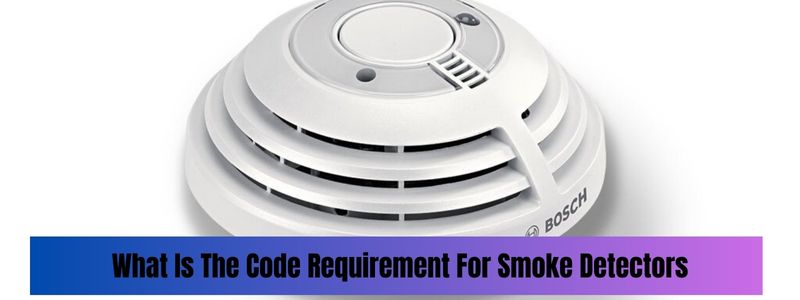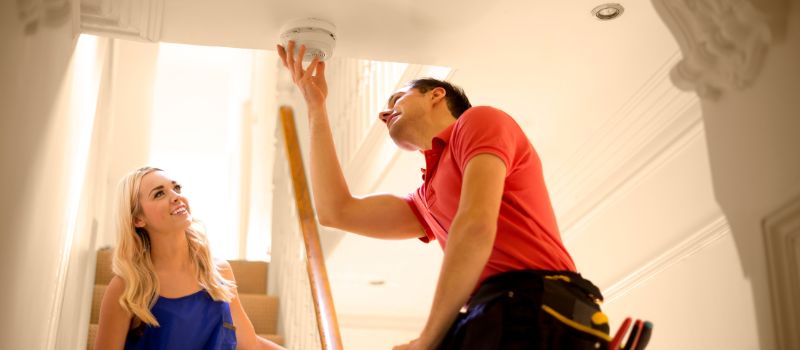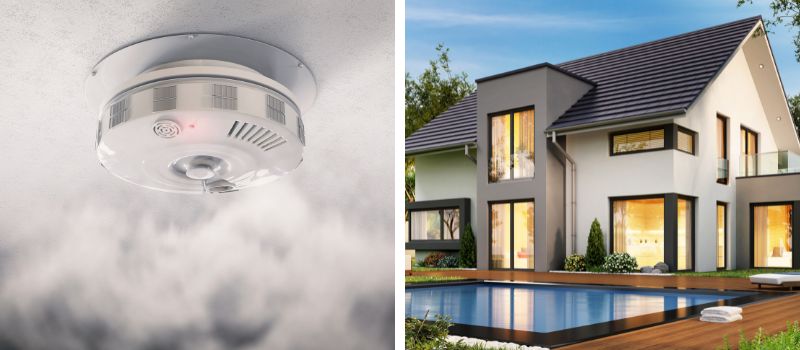Heat detectors are devices designed to detect abnormal temperature increases, which may indicate the presence of a fire. They are typically installed in spaces where other fire detection systems, such as smoke detectors, may not be suitable due to high levels of dust, humidity, or other environmental factors.
To provide the best protection, it is crucial to understand the area range that a heat detector can cover. This is the maximum area a heat detector can effectively monitor for fires. In this article, we will delve into the area range of heat detectors, as well as some factors to consider when determining the most suitable heat detector for your specific needs.
What Is The Area Range Of A Heat Detector?
The area range of a heat detector depends on its type and placement. As per the National Fire Alarm Code (NFPA 72), heat detectors on smooth ceilings should be spaced no more than 50 feet apart, providing a maximum coverage area of 2,500 square feet per detector.
However, it is essential to consider factors such as ceiling height, room layout, and environmental conditions to determine the most appropriate area range for your specific situation.
Types of Heat Detectors
There are two main types of heat detectors, which differ in how they detect fires and the area range they cover:
Fixed Temperature Heat Detectors
These detectors are designed to trigger an alarm when the temperature reaches a predetermined threshold, typically around 135°F (57°C). Fixed temperature heat detectors are the most common type of heat detectors and are suitable for a wide range of applications.
Rate-of-Rise Heat Detectors
Rate-of-rise heat detectors, as the name suggests, detect fires by monitoring the rate at which the temperature increases. They are triggered when the temperature rises at a faster rate than normal, typically 15°F (8°C) per minute. These detectors are ideal for spaces where a rapid temperature increase is more indicative of a fire than a fixed temperature threshold.
Determining the Area Range of Heat Detectors
The area range of a heat detector depends on several factors, including the type of detector, the height of the ceiling, and the specific environment in which it is installed. The following guidelines can help you determine the appropriate area range for your heat detector:
Fixed Temperature Heat Detectors
The National Fire Protection Association (NFPA) recommends that fixed temperature heat detectors be spaced no more than 50 feet (15 meters) apart, with a maximum coverage area of 2,500 square feet (232 square meters) per detector. This recommendation is based on a ceiling height of up to 10 feet (3 meters). For higher ceilings, the coverage area may need to be reduced to ensure proper detection.
Rate-of-Rise Heat Detectors
The area range for rate-of-rise heat detectors is typically smaller than that of fixed temperature detectors, as they are more sensitive to rapid temperature changes. The NFPA recommends that rate-of-rise heat detectors be spaced no more than 30 feet (9 meters) apart, with a maximum coverage area of 900 square feet (84 square meters) per detector.
It is essential to note that these guidelines are general recommendations and may need to be adjusted based on factors such as ceiling height, room layout, and environmental conditions. Consultation with a fire protection professional is recommended to determine the most appropriate area range for your specific situation.
Maximizing the Efficiency of Heat Detectors
To ensure the effectiveness of your heat detectors, consider the following best practices:
- Install detectors in high-risk areas: Focus on areas where fires are more likely to occur, such as
kitchens, utility rooms, and boiler rooms. Heat detectors are especially suitable for these areas where smoke detectors may be prone to false alarms due to steam or cooking smoke.
- Follow manufacturer recommendations: Always adhere to the manufacturer’s guidelines for installation, maintenance, and testing of heat detectors. These recommendations are based on extensive research and testing to ensure optimal performance.
- Proper spacing: Ensure that heat detectors are spaced correctly according to the guidelines mentioned earlier in this article. This will maximize their efficiency in detecting fires and provide comprehensive coverage of the area.
- Regular maintenance and testing: Like any safety device, heat detectors need regular maintenance and testing to ensure they are functioning correctly. This includes cleaning the detector, replacing batteries (if applicable), and testing the alarm to verify that it is working as intended.
- Consider environmental factors: When choosing the type of heat detector and determining its area range, consider factors such as the presence of dust, humidity, or high temperatures that may impact the detector’s performance. Adjust the area range and spacing as needed to account for these environmental factors.
- Integrate with other fire detection systems: Heat detectors are most effective when used in conjunction with other fire detection devices, such as smoke detectors and fire alarm systems. This allows for a comprehensive fire detection strategy that ensures maximum safety and protection.
- Consult with professionals: To ensure the best protection, consult with fire safety professionals who can assess your specific situation and provide tailored recommendations for the type, placement, and spacing of heat detectors.
In Conclusion
The area range of a heat detector is a crucial factor to consider when installing fire detection systems in your home or workplace. By understanding the different types of heat detectors, their respective area ranges, and the factors that can impact their performance, you can make informed decisions that will ensure the safety and security of your property.
Remember to consult with fire protection professionals and follow the guidelines and recommendations provided in this article to maximize the efficiency of your heat detectors. By doing so, you can trust that your heat detectors will provide the protection you need in the event of a fire.
Stay safe and take the necessary steps to protect your home or workplace with reliable and efficient heat detectors, giving you peace of mind and ensuring the well-being of your family, employees, and property.
Read more:
- Where Should Heat Detector Be Located?
- How Close Can A Heat Detector Be To A Wall? Expert Advice
- Where Should You Not Install A Heat Detector?
- Where To Install Smoke detector In Bedroom With Ceiling Fan?

Edward’s expertise in smoke detectors is particularly noteworthy. He has conducted extensive research on the latest advancements in smoke detector technology and has worked closely with manufacturers to develop cutting-edge products that can detect fires more accurately and quickly.




